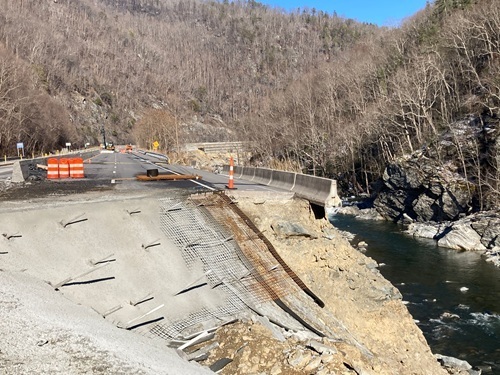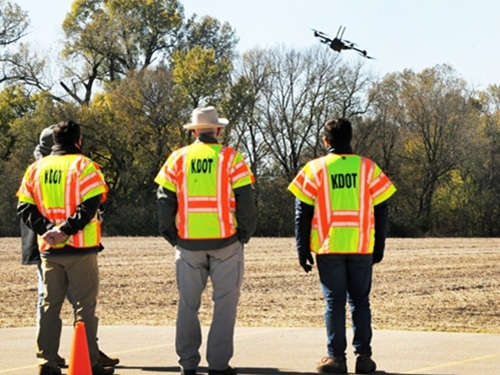In 2022, the Michigan Department of Transportation made a series of improvements to the highways crisscrossing the state’s Upper Peninsula or U.P. region, with projects widening road shoulders, upgrading weather sensor stations, installing “smart” traffic signals, and making them more active transportation-friendly.
[Above photo by Michigan DOT]
Those projects are also part of its larger decade-long statewide Toward Zero Deaths or TZD effort to reduce roadway injuries and fatalities, noted Jason DeGrand, Michigan DOT region operations engineer, in a statement.
The statewide TZD safety campaign parallels a national strategy on highway safety. Though motor vehicle traffic declined nationally during 2020 with the onset of the COVID-19 pandemic, traffic crash deaths increased in 2020 and stayed high through 2021.
For Michigan, preliminary numbers indicate fatal crashes increased 10 percent in 2021, though that the trend reversed slightly in 2022. As of December 6, unofficial data showed that 1,017 people died on Michigan roadways in 2022, a decrease of 50 compared to the same time in 2021.

Additionally, 5,304 people sustained serious injuries statewide in motor vehicle crashes, which is 75 fewer compared to the same period in 2021.
Where the U.P. region is concerned, through September 18, unofficial statistics showed 16 people had died on roads in 2022, with 150 seriously injured; some 15 fewer fatalities and 31 fewer serious injuries compared to the same period in 2021.
“Michigan DOT is doing its part in the TZD effort by continuing to invest infrastructure funding into projects that improve the safety of the roadway network,” said Justin Junttila, Michigan DOT region traffic and safety engineer. “The strategy is to address crashes systemically, including at spot locations where a crash pattern has been identified, as funding allows.”
For example, he pointed to an effort begun in 2022 to add more capabilities to its roadside environmental sensor station or ESS network, which is comprised of roadside towers around the peninsula equipped with cameras and instruments.

“The ESS can increase safety by helping us prioritize winter maintenance activities,” he explained – noting that camera images, precipitation, temperatures, wind speed, and other information are available on Michigan DOT’s interactive “Mi Drive Map,” which provides drivers with valuable insight into weather conditions along their planned routes.”
“This year’s sensor upgrades are anticipated to result in less downtime for devices due to age and obsolescence issues,” Junttila said. “Upgraded cameras will provide much better nighttime images, which means our maintenance folks will be able to better prioritize winter snow plowing and road maintenance.”
Michigan DOT also included paved shoulder widening on several U.P. road projects in 2022 to help mitigate lane departure crashes – the number one type of traffic crash in the U.P. In addition, wider paved shoulders provide more room for pedestrians and bicyclists to travel safely on the highway while also helping the agency improve maintenance of the overall roadway area.
“With narrow paved shoulders, we’re constantly adding gravel to deal with the drop-off at the pavement edge caused by erosion,” DeGrand said. “Wider shoulders eliminate the drop-off and result in less worker exposure to traffic dangers.”
The agency also added new traffic detection camera systems at busy intersections in three U.P. counties to help smooth the flow of traffic. Based on the vehicles detected by the camera – which do not record or store video footage, Michigan DOT stressed – in the intersection, sensors adjust traffic signal timing to improve traffic flow.
While those new cameras are not technically safety devices, by improving vehicle detection, they can ultimately boost safety. Those detectors will function better in winter than traditional sensors embedded in the roadway, since snow cannot cover them.
“These projects will create more reliable vehicle detection, which improves the operational efficiency of the intersections,” DeGrand said. “That results in fewer backups and potentially decreases crashes.”
The upgraded traffic signals will also allow MDOT electricians to maintain the equipment remotely or from the roadside cabinet, without having to enter the roadway.”
 States
States
NCDOT to Rebuild I-40 with National Forest Rocks
June 27, 2025 States
States

